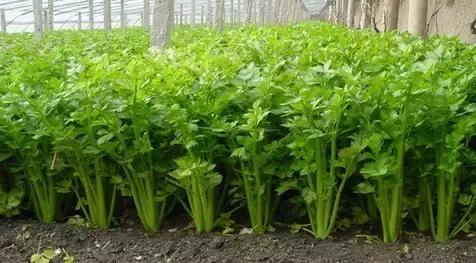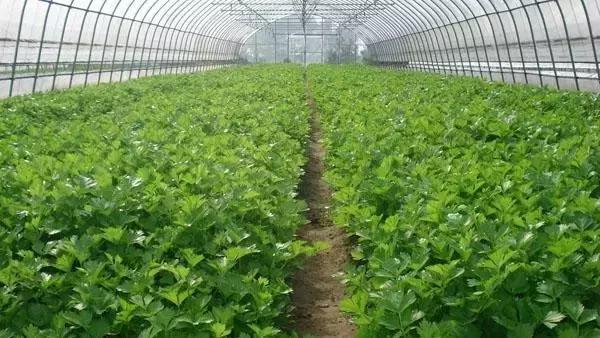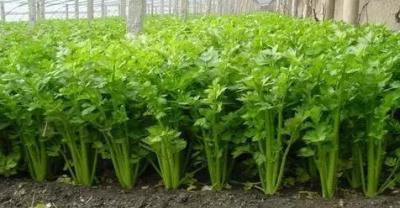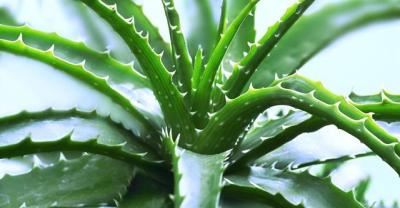The planting technology of celery in greenhouse had been known for a long time.
It is recorded in Lu's Spring and Autumn Flavor that "the beauty of food is the parsley of Yunmeng". Celery not only has a delicious diet, but also has high nutritional and medicinal value, in addition to being rich in various vitamins and minerals. It also has the effects of lowering blood pressure, lowering blood lipids, reducing swelling and diuresis. Of course, such healthy vegetables are frequent customers and hot sellers in the vegetable market, and they can be seen all the year round. So today the editor will introduce the greenhouse cultivation techniques of celery.
Celery in greenhouse is generally carried out to raise seedlings in summer, plant in autumn, keep warm in winter, harvest before and after New Year's Day and Spring Festival, celery likes a cold and humid climate, is not resistant to high temperature, and the main technical points are as follows:
1. Variety breeding
Solid celery varieties with cold resistance, strong taste, high yield and good resistance should be selected for celery cultivation in greenhouse. At present, the varieties suitable for planting in China, such as American celery, Dutch celery, Ventura celery, Shuanggang celery, Tianjin solid celery, California Wang Xiqin and so on.

2. Raising seedlings
Celery planting in greenhouse is in summer, facing the climatic conditions of strong light, high temperature and rainy weather, so the seedbed should be prepared with shading and rain-proof conditions.
Before sowing (the seeds are soaked in 15-20 ℃ water for 24 hours, then washed with clean water for 3-4 times, mixed with fine sand to accelerate germination under the environment of 15-18 ℃, remember to turn and water every day, keep moist, and germinate in about a week) first pour sufficient bottom water on the seedbed, and then spread the germinated seeds evenly.
Before seedling emergence after sowing, the soil of the seedling bed should be kept moist, and straw should be covered on the border or sunshade net should be set up before emergence to prevent direct sunlight and play a role in cooling and moisturizing. Note that the temperature of celery seedbed during the whole growth period should not be too low, and the light intensity should not be too weak, otherwise it is easy to bolt ahead of time and reduce the yield and quality.
3. Colonization
Before planting, it is necessary to apply base fertilizer for soil preparation, and the base fertilizer is mainly organic fertilizer, which can be combined with a small amount of chemical fertilizer, especially phosphorus and potassium fertilizer. Pay attention to pouring water into the seedling bed before raising seedlings, so that the seedlings can be pulled up by roots, and planting should be paid attention to when planting, the row spacing in the border is 15-20cm, the plant spacing is 10cm, the individual plant is planted, the depth is suitable, and the planting water is watering immediately after planting in the whole border.

4. Management
The newly planted celery seedlings are in the slow seedling stage, which requires frequent ventilation, maintain a suitable temperature and humidity, and spraying foliar fertilizer is beneficial to promote the production of new roots.
When growing at seedling stage, the temperature should be controlled at 15-25 ℃ in daytime and 10 ℃ at night. When the room temperature is more than 25 ℃, the temperature should be adjusted by ventilation. The temperature of celery can be raised appropriately in the later stage of celery growth, which can be controlled at 20-25 ℃ in daytime. With the decrease of outdoor air temperature, the temperature of greenhouse at night will also decrease. If it is lower than 10 ℃, it is necessary to strengthen heat preservation to prevent frost damage.
It is necessary to squat seedlings for 1-2 weeks after survival, and then pay attention to keep the ridge surface wet as soon as it is dry, so as to lay a good foundation for rapid growth in the middle and later stages. When celery seedlings grow to 6-7 leaves, they begin to enter the vigorous growth period, which is the period of product organ formation and the peak of nutrient absorption, so it is necessary to strengthen the management of water and fertilizer. In general, water is irrigated every 5-7 days, and fertilizer is applied once between the two waters, that is, two water and one fertilizer, diammonium 20kg or urea 15kg per mu, sprinkled while there are no water droplets on the plant, followed by watering, or combined with irrigation. With the decrease of the air temperature and the temperature in the greenhouse, the watering interval should be properly prolonged, from watering every 5-7 days to 10-15 days. Watering should be carried out in the morning, and the ventilation should be strengthened after watering to avoid excessive humidity, resulting in excessive growth and disease of celery. The most suitable air humidity for celery is 80%, and the soil moisture is 80-90%.
- Prev

Teach you how to plant potted plants at home
Usually after eating fruit, we always fantasize about planting the remaining seeds into saplings. When we plant seeds into saplings, there are not only seeds.
- Next

Management methods of incense trees after planting
(1) in the initial management of the planting of incense trees, attention should be paid to preventing drought and watering in time according to the weather conditions. The saplings are young from February to March, June to August every year.
Related
- Fuxing push coffee new agricultural production and marketing class: lack of small-scale processing plants
- Jujube rice field leisure farm deep ploughing Yilan for five years to create a space for organic food and play
- Nongyu Farm-A trial of organic papaya for brave women with advanced technology
- Four points for attention in the prevention and control of diseases and insect pests of edible fungi
- How to add nutrient solution to Edible Fungi
- Is there any good way to control edible fungus mites?
- Open Inoculation Technology of Edible Fungi
- Is there any clever way to use fertilizer for edible fungus in winter?
- What agents are used to kill the pathogens of edible fungi in the mushroom shed?
- Rapid drying of Edible Fungi

